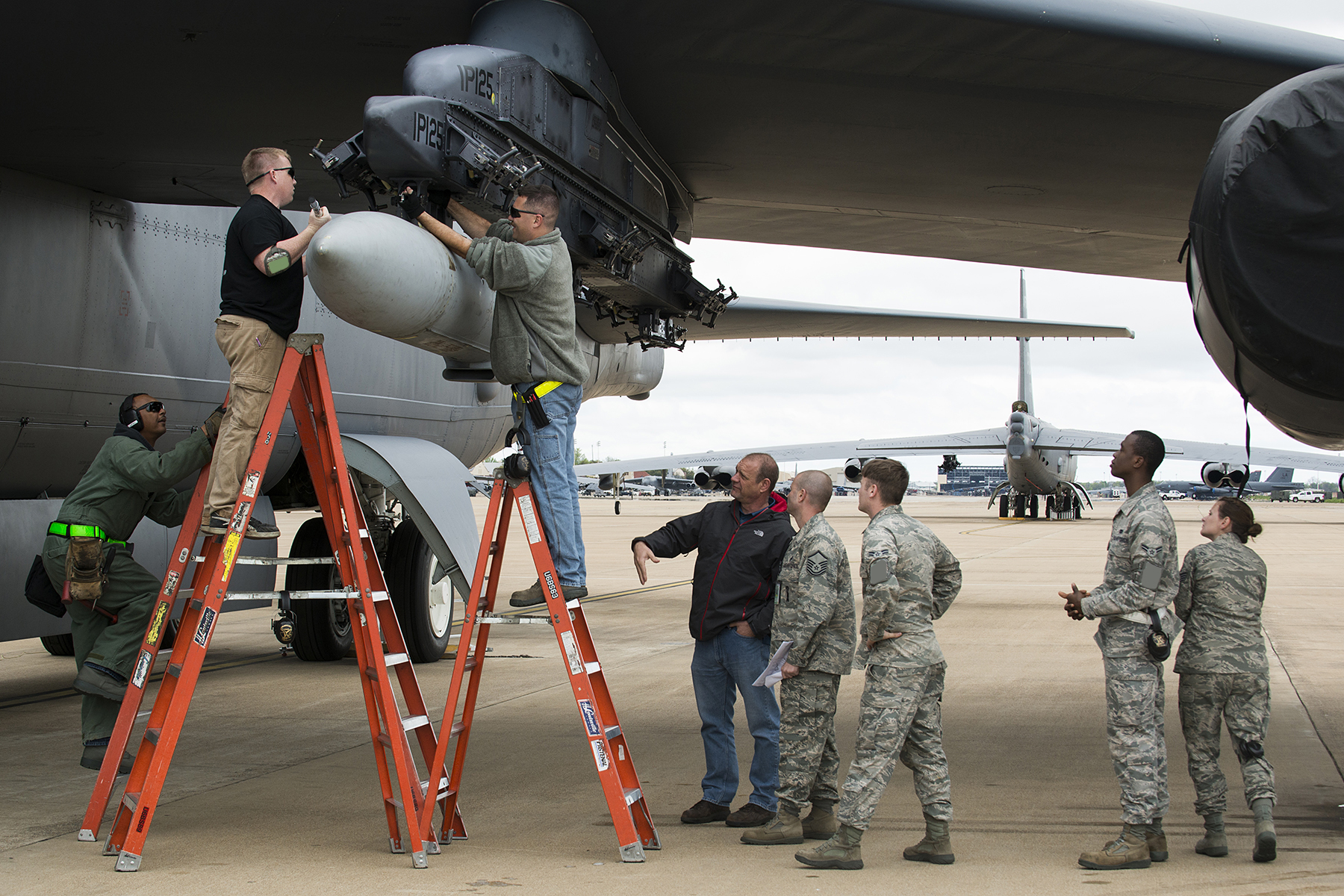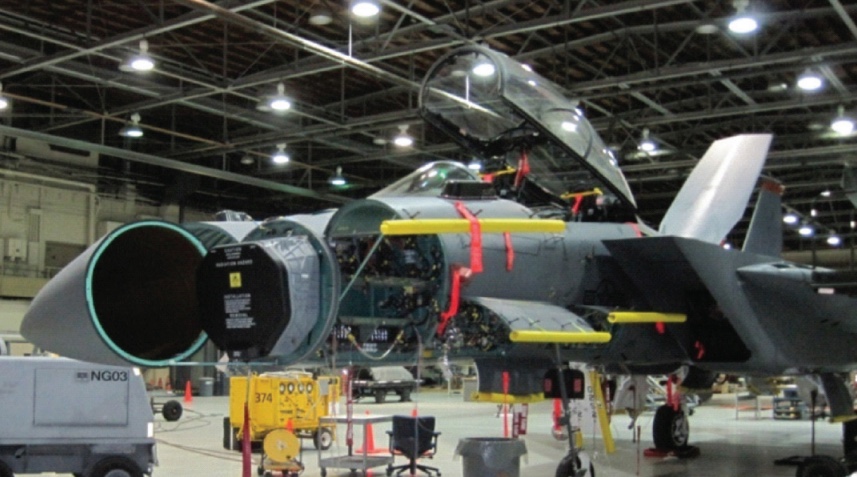F-15E Strike Eagles from the 336th Fighter Squadron, the “Rocketeers,” of the 4th Fighter Wing based at Seymour Johnson AFB arrived at Al Dhafra Air Base in the UAE on the 14th of June, 2019. The contingent was part of the bolstering of U.S. forces in the region that began in May after still largely undisclosed intelligence warned of potential Iranian aggression throughout the region. We closely examined the official photos showing the arrival of the detachment of Strike Eagles at Al Dhafra Air Base and came away with a noteworthy observation—five out to the six aircraft photographed are carrying AN/ASQ-236 “Dragon’s Eye” Active Electronically Scanned Array (AESA) radar pods on their centerline stations.
The pod is self-contained and carries a stabilized AESA radar that rotates around the pod’s center axis as well as geo-positioning and cooling systems. As such, it can work as a side-looking airborne radar (SLAR), taking high detailed synthetic aperture radar (SAR) maps of an area the Strike Eagle flies parallel too or even over, with near photo-like fidelity. In fact, it is supposedly so sensitive that it can detect roadside and semi-buried IEDs and possibly even groups of people on foot. It is also rumored to be able to generate ground-moving target indicator (GMTI) geolocation data on vehicles, such as trucks and armor, or vessels at sea.

It’s also worth noting that AESA arrays have a secondary ability to act as powerful electronic attack nodes. Considering the AN/ASQ-236 is quite mature, it is possible that they have acquired software that would allow them to work in this mode, even if only against a limited set of enemy emitter types.
These functions and the jet’s multi-role fighter abilities and long-range not only give the F-15E crew the ability to collect very high-quality intelligence in less than friendly neighborhoods, but they can also rapidly acquire very precise targeting information that can be used to sling weapons, like GBU-39 Small Diameter Bombs, at those targets. Above all else, they can do this in any weather and under any battlefield conditions. The radar is not affected by the time of day, smoke, or cloud cover.
Because of its unique talents and two crew concept of operations, the F-15Es have become manhunters of sorts, able to take out high-value and highly mobile individuals in remote and hostile locales. Their ability to dash at supersonic speed also allows them to reposition and react to changing conditions far quicker than say a MQ-9 Reaper drone.
The AN/ASQ-236 has been acknowledged officially since 2009, but it had been in limited testing for years before that. Still, we have never seen a single unit brandish so many at one time. From what we know, the pods remain something of a low-density, high-demand asset. In other words, they are not that plentiful, but they provide high-value capabilities that are often requested by combatant commanders. Other aircraft have been tested with the pod, including the F-16, B-52, and AC-130, but it hasn’t been officially adopted by any other platform as of yet.

With even its basic confirmed set of capabilities, it really isn’t surprising that the F-15Es equipped with as many Dragon’s Eye pods as possible would have been ordered to the region. They provide combatant commanders with a powerful intelligence, surveillance, and reconnaissance tool that could be deployed around known hotspots or even along the Iranian border. One could see how important the capability could be when monitoring activities in Iranian ports and near and within the volatile Strait of Hormuz. The fact that the F-15E can defend itself and abruptly prosecute ground and surface targets is an even bigger plus. Which begs the question, were the Rocketeers called back to the Middle East primarily for their Dragon’s Eye capabilities?
If this is the case, it was a good call, as just days after their arrival, a defenseless RQ-4 Broad Area Maritime Surveillance Demonstrator (BAMS-D) was shot down by the Iranians as it peered into Iranian territory from international airspace near the strait.
Although it is unknown if it has been officially deemed operational, SBD II, better known by its nickname Stormbreaker, will feature a tri-mode seeker and network connectivity that will allow it to strike groups of moving targets at standoff ranges. This capability combined with the targeting information gathered by the Dragon’s Eye pod, as well as the F-15E’s ability carry 20 of these weapons—16 without the centerline station—at one time, as well as two fuel tanks and four air-to-air missiles, could make the Strike Eagle an absolutely devastating weapon for combating small boat swarms under literally any conditions, including dense fog. Once again, we are not aware that this weapon has been made operational at this time, but it was slated to be in the third or fourth quarter of this year. Still, it wouldn’t be unheard of for such a munition at the tail end of its development to see pre-operational use due to urgent operational demands.

It will also be interesting to see what role the AN/ASQ-236 will continue to play once the F-15E gains its own AESA radar in the near future. The AN/APG-82 AESA radar set has already begun replacing the older mechanically scanned array AN/APG-70 in some Strike Eagle Squadrons. This is an incredibly powerful radar and is among the most capable in the world, if not the most capable. Certain capabilities may overlap with the AN/ASQ-236, but there could be new synergies to be leveraged between the two sensors that were not possible with the Strike Eagle’s older fire control radar.

Regardless, the Rocketeers brought Dragon’s Eye on their pop-up deployment to the Middle East in a very big way and these incredibly flexible multi-role fighter jets are likely providing key intelligence data on a continuous basis in that very troubled part of the world.
Contact the author: Tyler@thedrive.com
